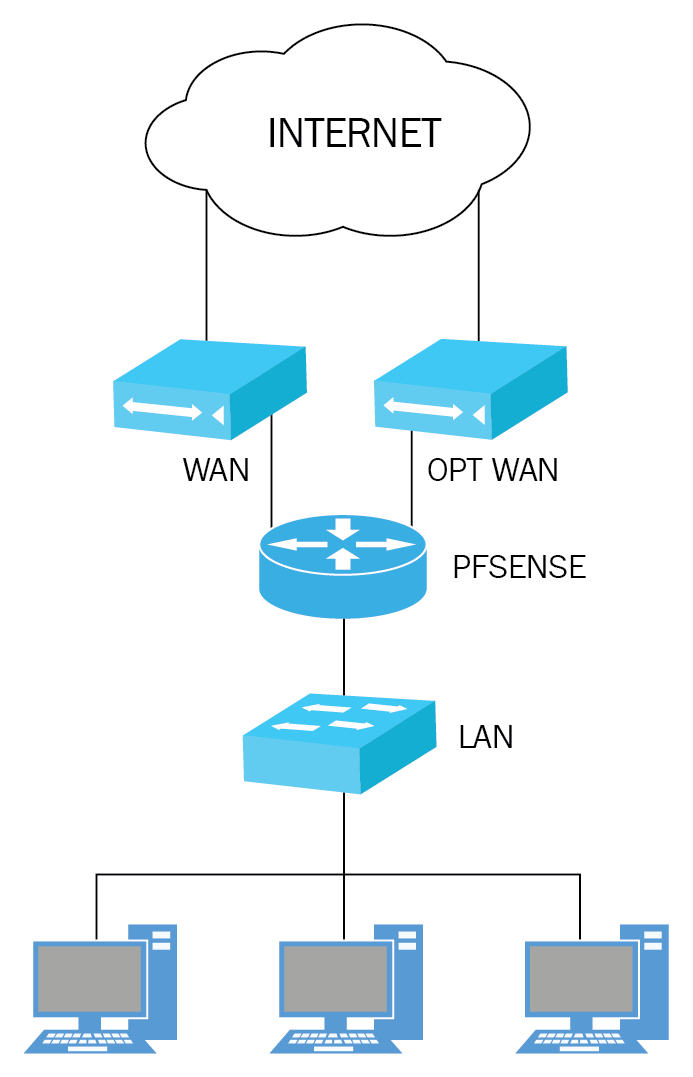When we want improved uptime and improved throughput with our internet connection, multiple WAN interfaces providing multiple internet connections provide an effective way of accomplishing this. When you first configure pfSense, you must set up a working LAN and WAN interface. You can have more than one WAN interface, and these interfaces are referred to as OPT WAN interfaces.

To take full advantage of a system that utilizes multiple WANs, you should have separate internet connections. The ideal scenario is one in which you have separate internet connections from separate internet providers. This is because there is a higher likelihood of a connectivity issue between your network and an internet service provider, thus affecting all connections that go to that provider compared to a connectivity issue affecting multiple providers at the same point in time...



